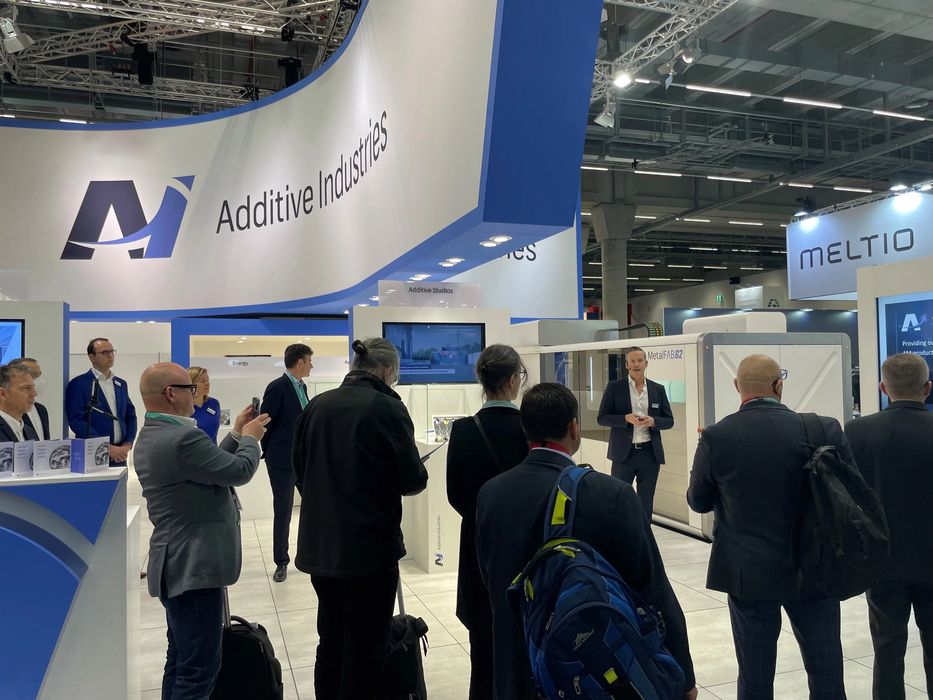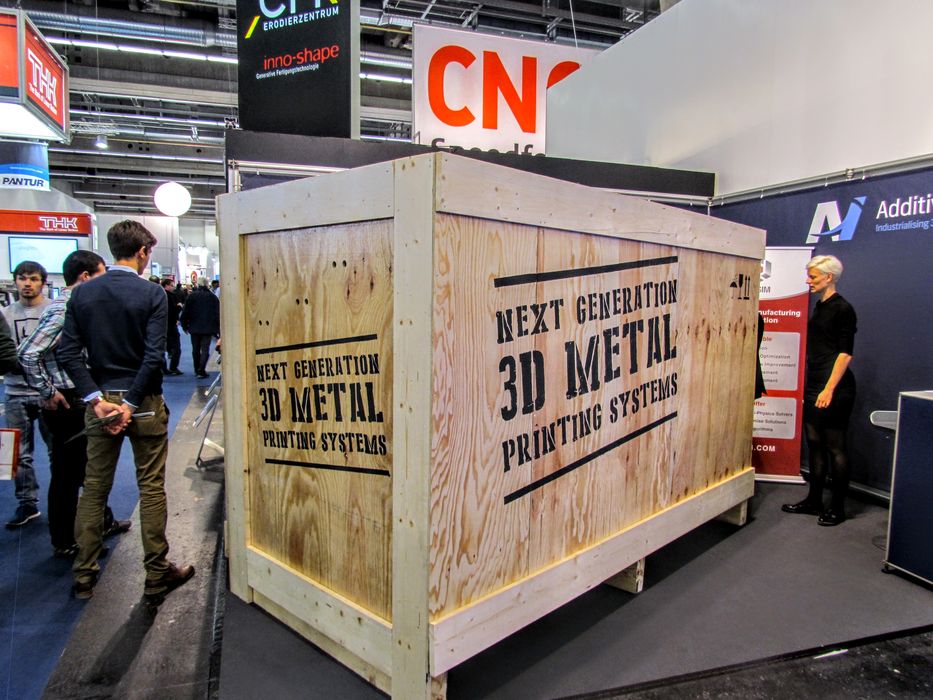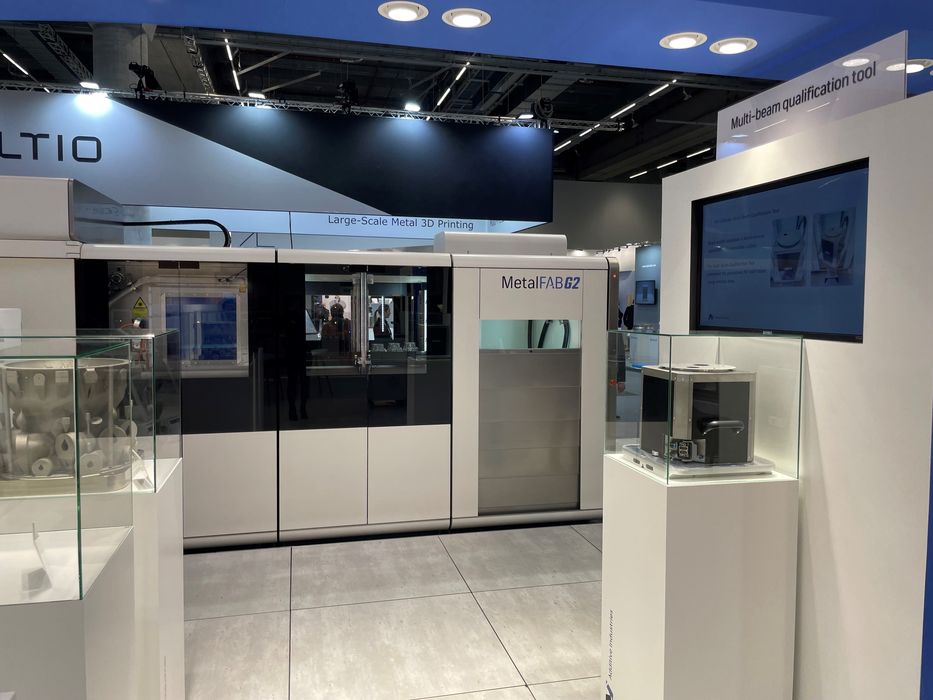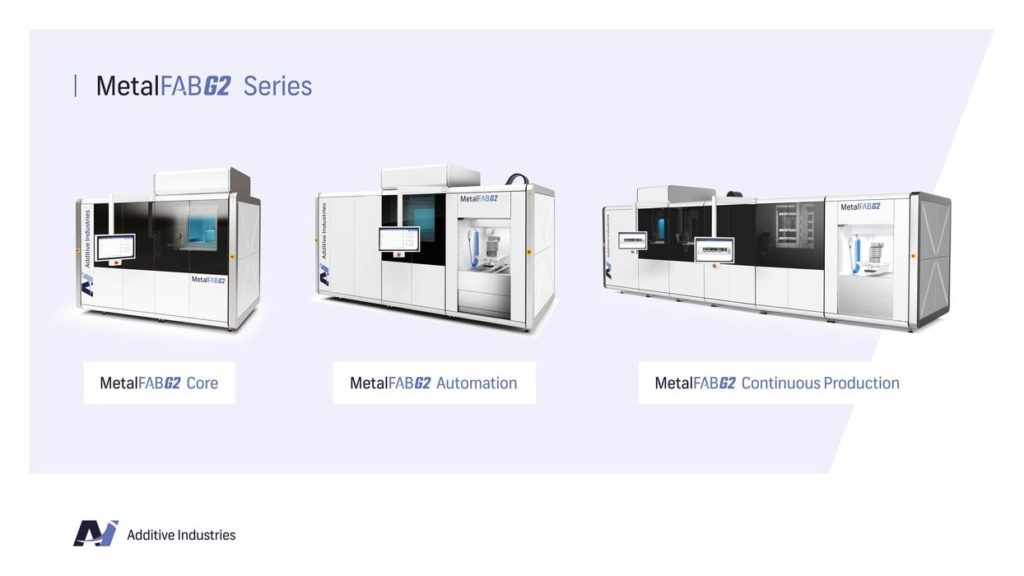
It’s not often Additive Industries announces a new platform, but they did this week.
The Eindhoven-based company’s flagship product has been the MetalFAB1, an unusual device first introduced way back in 2014 during this unusual reveal at the now defunct Euromold exhibition:

The company has come a very long way since then, gradually incrementing the capabilities of the MetalFAB1 to provide increased performance.
The key to their success is their early recognition that in order to produce metal parts, there are more steps involved than simply the printing itself. There are stages required in post processing where loose powder is taken off, heat treatments are provided, supports are removed, etc. They designed a machine that would do more than just the printing and would take on many of the other tasks involved. This greatly simplified not only the work required by the 3D printer operators, but also in acquiring the solution itself: fewer pieces of equipment had to be purchased.
Now, after seven years, they’ve announced their new flagship system: MetalFabG2. I presume the “G2” stands for “Generation 2”.

What’s different about the MetalFABG2?
The major difference appears to be throughput. Additive Industries said the “G2” offers “double productivity” over their previous MetalFAB1 system. That alone should attract significant interest from manufacturers, as throughput is the number one consideration.
But there’s more. Additive Industries explains:
“This new model had over 150 updates implemented and features optimized gas flow, optimized heat management, updated process parameters and automated beam quality measurements. The system is Sigma Labs PrintRite3D ready.”
Note: PrintRite3D is a melt pool monitoring tool that operates in real time. This enables MetalFABG2 operators to record evidence of part quality without the requirement for physical testing, as each part of the build is recorded and analyzed on the fly.

The new MetalFABG2 is set to come in three different configurations:
- Core
- Automation
- Continuous Production
The three configurations are similar, but incrementally add additional processing functions. It may be that a manufacturer prefers to perform some of the production lifecycle steps using existing equipement, or they have less need for a continuous production solution.
Nevertheless, I think manufacturers will be quite attracted to the MetalFABG2 simply because of its throughput. This allows the cost of the system to be defrayed over double the number of parts, thus decreasing the part unit cost, possibly significantly.
This throughput advantage may also open up new markets for Additive Industries. Consider a case where a prospect might not have been able to justify use of a MetalFAB1 because the resulting part cost was slightly higher than financially justifiable. The MetalFABG2 might bring that cost down under the financial break-even point and prove profitable to use the system.
In other words, the MetalFABG2 will not only be of interest to current Additive Industries prospects and customers, but also to new ones.
Additive Industries also announced Safran Group recently approved use of a MetalFAB1 system after considerable testing, and now it may be the company might start looking at the MetalFABG2 to take advantage of the increased throughput.
The MetalFABG2 looks to be a very interesting option for manufacturers.
